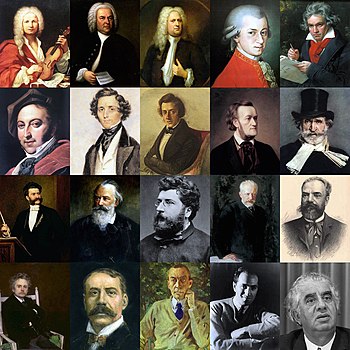|
||||||||||||||||||||||||||
| Down From 9
|
||||||||||||||||||||||||||
|
Views 318K |
||||||||||||||||||||||||||
|
|
Down From 8
|
|||||||||||||||||||||||||
|
Views 595K |
||||||||||||||||||||||||||
| Down from 7
|
|
|||||||||||||||||||||||||
|
Views 703k |
||||||||||||||||||||||||||
|
|
Down from 6
|
|||||||||||||||||||||||||
|
Views 724K |
||||||||||||||||||||||||||
| NEW
|
|
|||||||||||||||||||||||||
|
Views 800k |
||||||||||||||||||||||||||
|
|
||||||||||||||||||||||||||
|
Views 817k |
||||||||||||||||||||||||||
|
|
|
|||||||||||||||||||||||||
|
Views 1.6M |
||||||||||||||||||||||||||
|
|
|
|||||||||||||||||||||||||
|
Views 2.1M |
||||||||||||||||||||||||||
| NEW
|
|
|||||||||||||||||||||||||
|
Views 2.5M |
||||||||||||||||||||||||||
|
|
|
|||||||||||||||||||||||||
|
Views 3.8M |
||||||||||||||||||||||||||
 |
||||||||||||||||||||||||||
Styles
On this radio station you will find the following music styles;
Brass
Brass Band music played on this station is in the British style of brass banding.
A British brass band is a musical ensemble comprising a standardised range of brass and percussion instruments. The modern form of the brass band in the United Kingdom dates back to the 19th century, with a vibrant tradition of competition based around communities and local industry, with colliery bands being particularly notable.
Bands using the British instrumentation are the most common form of brass band in the United Kingdom, Australia and New Zealand, and are also widespread in continental Europe, Japan and North America.
The tradition of the brass band is espicially noticable in the music of the Salvation Army who beside modern praise bands almost exclusively uses brass bands for the accompaniment and congregational music.
British Brass Bands are limited to specific instruments, excluding, for instance trumpets or French horns, which are found in orchestras and concert bands.
The standard instrumentation is as follows:[2]
- 1 soprano cornet (E♭)
- 9 cornets (B♭) –
- Front row: one principal cornet, three solo cornets
- Back row: one repiano Cornet, two 2nd cornets, two 3rd cornets
- 1 flugelhorn (B♭)
- 3 tenor horns (E♭; sometimes called alto horn in the United States and Germany) – solo, 1st, 2nd
- 2 baritone horns (B♭) – 1st, 2nd
- 2 tenor trombones (B♭) – 1st, 2nd
- 1 bass trombone (C), notated in bass clef
- 2 euphoniums (B♭)
- 2 E♭ basses, also known as E♭ tubas, notated in treble clef
- 2 BB♭ basses, also known as B♭ tubas, notated in treble clef
- 2 to 4 percussion
Salvation Army Band
In the UK, Salvation Army brass bands have run parallel to the main brass band movement since the 1870s. Salvation Army Bands range from small church bands to staff bands composed of the best Salvation Army bandsmen in the area. Their instrumentation is almost identical except for a minor difference in the cornet section whereby the repiano is dropped and the remainder of the row is made up of parts designated 1st and 2nd (two players each) rather than 2nd and 3rd; and that some major pieces have a split first trombone part, the lower part usually cued elsewhere in the band. Salvation Army Bands can be found in most countries around the world in which it operates.
Styles
On this radio station you will find the following music styles;
Brass
Classical (European Classical music)
Contemporary Christian Music
Contemporary Worship Music
Christian Rock and Hard Rock
Christian Hip Hop
Gospel (Black Gospel)
International
Judaic Music
Messianic
Southern Gospel
Styles
On this radio station you will find the following music styles;
Classical Music
Our focus is mainly on the Christian Classical Music.
The Article Classical Music on wikipedia however gives a good overview;
Top row: Antonio Vivaldi, Johann Sebastian Bach, George Frideric Handel, Wolfgang Amadeus Mozart, Ludwig van Beethoven;
second row: Gioachino Rossini, Felix Mendelssohn, Frédéric Chopin, Richard Wagner, Giuseppe Verdi;
third row: Johann Strauss II, Johannes Brahms, Georges Bizet, Pyotr Ilyich Tchaikovsky, Antonín Dvořák;
bottom row: Edvard Grieg, Edward Elgar, Sergei Rachmaninoff, George Gershwin, Aram Khachaturian
Classical music is art music produced or rooted in the traditions of Western music, including both liturgical (religious) and secular music. While a similar term is also used to refer to the period from 1750 to 1820 (the Classical period), this article is about the broad span of time from roughly the 11th century to the present day, which includes the Classical period and various other periods.[1] The central norms of this tradition became codified between 1550 and 1900, which is known as the common practice period. The major time divisions of classical music are as follows: the early music period, which includes the Medieval (500–1400) and the Renaissance (1400–1600) eras; the Common practice period, which includes the Baroque (1600–1750), Classical (1750–1820), and Romantic eras (1804–1910); and the 20th century (1901–2000) which includes the modern (1890–1930) that overlaps from the late 19th-century, the high modern (mid 20th-century), and contemporary or postmodern (1975–2015) eras.[citation needed]
Styles
On this radio station you will find the following music styles;
Contemporary Christian Music or CCM
Contemporary Christian music (or CCM—and occasionally "inspirational music") is a genre of modern popular music which is lyrically focused on matters concerned with the Christian faith. It formed as those affected by the 1960s Jesus movement revival began to express themselves in a more contemporary style of music than the hymns, Gospel and Southern Gospel music that was prevalent in the church at the time. Today, the term is typically used to refer to pop, rock, or praise & worship styles.
It has representation on several music charts including Billboard's Christian Albums, Christian Songs, Hot Christian AC (Adult Contemporary), Christian CHR, Soft AC/Inspirational, and Christian Digital Songs as well as the UK's Official Christian & Gospel Albums Chart. Top-selling CCM artists will also appear on the Billboard 200. In the iTunes Store, the genre is represented as part of the Christian and gospel genre.[1]
History
The growing popularity in the styles of Rock 'n 'Roll music in the 1950s was initially dismissed by the church because it was believed to encourage sinfulness. Yet as evangelical churches adapted to appeal to more people, the musical styles used in worship changed as well by adopting the sounds of this popular style.[2]
The genre became known as contemporary Christian music as a result of the Jesus movement revival in the latter 1960s and early 1970s,[3] and was originally called Jesus music.[4] "About that time, many young people from the sixties' counterculture professed to believe in Jesus. Convinced of the bareness of a lifestyle based on drugs, free sex, and radical politics, 'hippies' became 'Jesus people'".[5] However, there were people who felt that Jesus was another "trip".[5] It was during the 1970s Jesus movement that Christian music started to become an industry within itself.[6] "Jesus Music" started by playing instruments and singing songs about love and peace, which then translated into love of God. Paul Wohlegemuth, who wrote the book Rethinking Church Music, said "[the] 1970s will see a marked acceptance of rock-influenced music in all levels of church music. The rock style will become more familiar to all people, its rhythmic excesses will become refined, and its earlier secular associations will be less remembered."[7]
Styles
On this radio station you will find the following music styles;
Contemporary Worship Music (CWM) (Praise and Worship Music)
Contemporary worship music (CWM) is a loosely defined genre of Christian music used in contemporary worship. It has developed over the past sixty years and is stylistically similar to pop music. The songs are frequently referred to as "praise songs" or "worship songs" and are typically led by a "worship band" or "praise team", with either a guitarist or pianist leading. It is becoming a common genre of music sung in Western churches, particularly in Pentecostal churches, both denominational and nondenominational. Also many non-Charismatic Protestant Churches use this type of music. Some do so exclusively. Others have services that are just traditional along with services that are just contemporary. Others simply mix this type of music in with traditional. Some Protestant churches avoid this music and remain traditional. Also, Roman Catholic churches are using this type of music in some parishes. Some mix it in with more traditional music; others have certain masses with just contemporary worship music along with traditional masses; others only use contemporary; many others steer clear of contemporary worship and stick with traditional.
History and development
In the early 1950s, the Taizé Community in France started to attract youths from several religious denominations with worship hymns based on modern melodies.
In the 1950s and 1960s the Christian Church began to place particular emphasis on reaching to the youth. Christian Unions in university environments hosted evangelistic talks and provided biblical teaching for their members, Christian cafes opened with evangelistic aims, and church youth groups were set up. Amateur musicians from these groups began playing Christian music in a popular idiom. Some Christians felt that the Church needed to break from its stereotype as being structured, formal and dull to appeal to the younger generation. By borrowing the conventions of popular music, the antithesis of this stereotype, the Church restated the claims of the Bible through Christian lyrics, and thus sent the message that Christianity was not outdated or irrelevant. The Joystrings were one of the first Christian pop groups to appear on television, in Salvation Army uniform, playing Christian beat music. The Jesus People in America also had particular influence, and began to create their own musical subculture, sometimes referred to as Jesus music— essentially hippie-style music with biblical lyrics. This Jesus music gradually bifurcated into Christian rock (music played for concerts) and 'praise music' (music for communal worship).
Churches began to adopt some of these songs and the styles for corporate worship. These early songs for communal singing were arguably the first examples of contemporary worship music, and were characteristically simple, 'Youth Praise', published in 1966, was one of the first and most famous collections of these songs and was compiled and edited by Michael Baughen and published by the Jubilate Group.
As of the early 1990s, songs such as "Lord, I Lift Your Name on High", "Shine, Jesus, Shine" and "Shout to the Lord" had been accepted in many churches. Integrity Media, Maranatha! Music and Vineyard were already publishing newer styles of music. Supporters of traditional worship hoped the newer styles were a fad, while younger people cited Psalms 96:1, "Sing to the Lord a new song". Prior to the late 1990s, many felt Sunday morning was a time for hymns, and young people could have their music on the other six days. A "modern worship renaissance" helped make it clear any musical style was acceptable if true believers were using it to praise God. The changes resulted from the Cutting Edge recordings by the band Delirious?, the Passion Conferences and their music, the Exodus project of Michael W. Smith, and the band Sonicflood. Contemporary worship music became an integral part of Contemporary Christian music.[1]
More recently songs are displayed using projectors on screens at the front of the church, and this has enabled greater physical freedom, and a faster rate of turnover in the material being sung. Important propagators of CWM today include Hillsong, Vineyard, Bethel Music and Soul Survivor.
Theology and lyrics
As CWM is closely related to the charismatic movement, the lyrics and even some musical features reflect its theology. In particular the charismatic movement is characterised by its emphasis on the Holy Spirit, personal encounter and relationship with God, and agape.
More Articles …
Subcategories
Podcasts
Musician-Group-Pastor
Included are Artists, Groups or Ministry Contributors
Radio Front Page
The articles heading the Radio Front Page
Page 1 of 4
























































